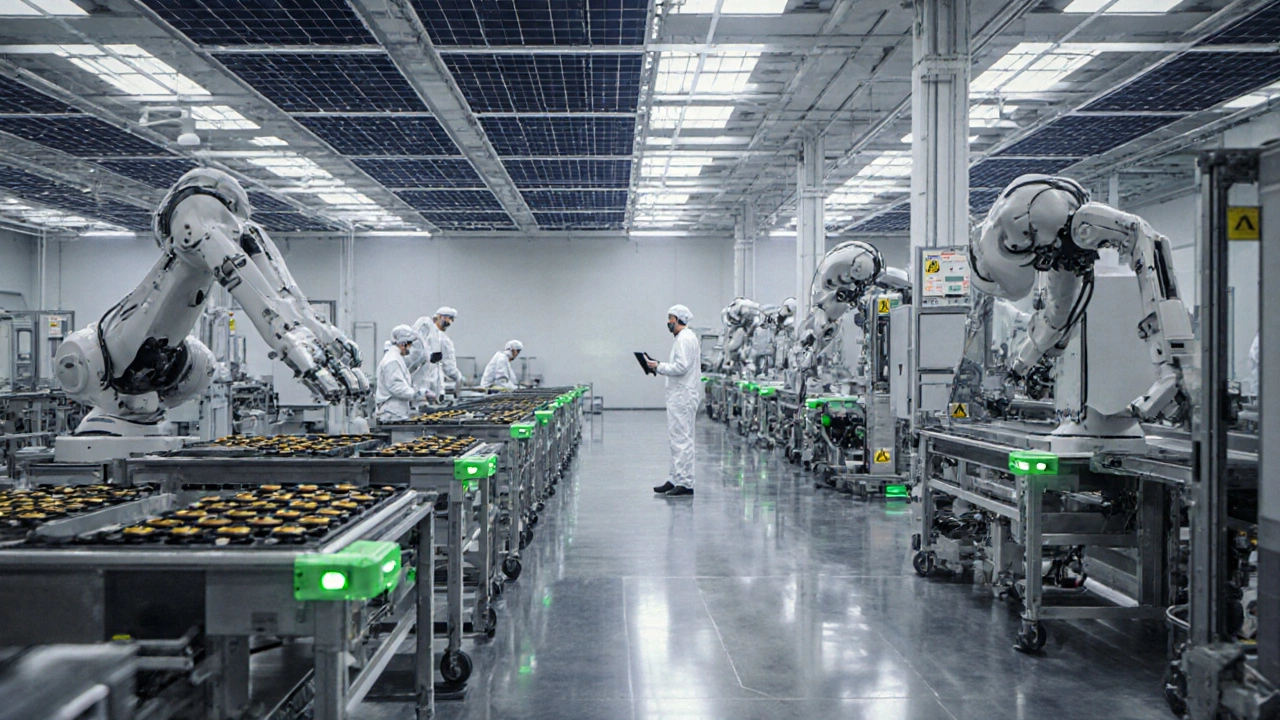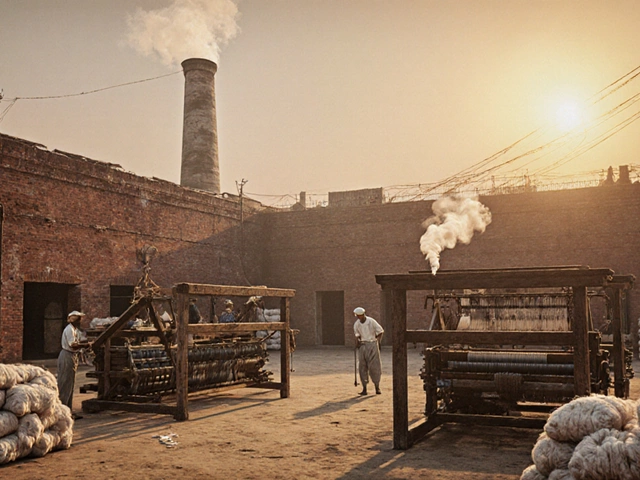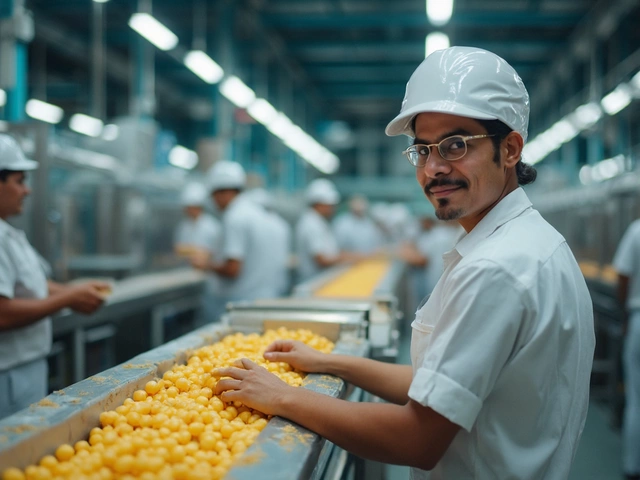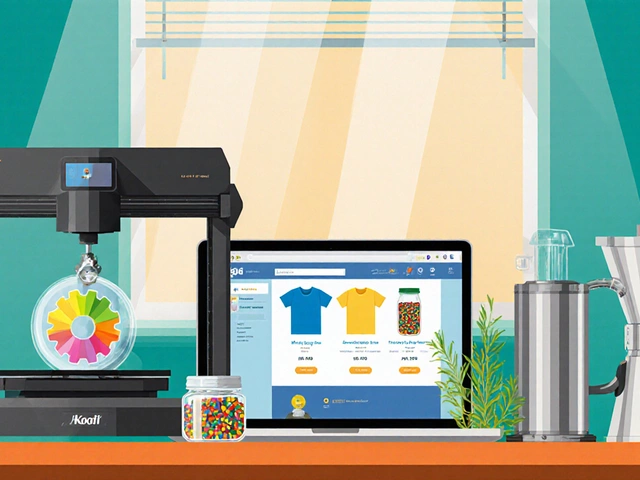Manufacturing Business Profit Calculator
Business Selection
Key Metrics
* Results based on industry averages from 2025 manufacturing projections. Startup costs and growth rates vary based on location and scale.
Comparison with Other Options
| Business Type | Startup Cost Range | Profitability Rank |
|---|
Imagine launching a venture today that can double its revenue in under two years while riding a wave of market demand. In 2025, certain manufacturing niches are cash‑flow magnets, thanks to tech breakthroughs, green mandates, and reshoring trends. This guide tells you exactly which businesses are topping the profit charts and how to jump in without a massive gamble.
Key Takeaways
- Electric‑vehicle battery packs, medical devices, and 3D‑printing services each show >30% gross margins.
- Initial capital ranges from $150K for niche 3D‑printing to $5M for battery factories.
- Market growth (CAGR) exceeds 12% for the top seven ideas, outpacing the overall manufacturing sector.
- Success hinges on automation, sustainable materials, and access to government incentives.
- Use the checklist at the end to vet your idea before writing a business plan.
Why some businesses are booming right now
Profitability isn’t magic; it’s a mix of three forces that have aligned in 2025:
- Supply‑chain reshoring: Companies are moving production closer to end‑users to avoid freight spikes, creating a premium for local manufacturers.
- Green regulations: Carbon‑pricing and zero‑waste targets push buyers toward eco‑friendly suppliers, allowing manufacturers that can certify sustainability to charge a price premium.
- Technology acceleration: Automation, AI‑driven quality control, and low‑cost renewable energy cut operating expenses dramatically.
When a niche hits all three, margins soar. The ideas below tick those boxes.
Top Manufacturing Startup Ideas for 2025
1. Electric Vehicle Battery Manufacturing is a high‑growth sub‑sector that assembles lithium‑ion cells for cars, scooters, and grid storage.
Global EV sales are projected to hit 15million units this year, and battery packs account for roughly 30% of vehicle cost. With economies of scale, a midsize plant (1GWh capacity) can achieve 35‑40% gross margins. Key incentives include the U.S. Inflation Reduction Act credits and EU battery‑factory subsidies.
2. Medical Device Manufacturing focuses on low‑risk ClassII products such as handheld diagnostics, wearables, and orthopedic implants.
Health‑tech spending is slated to grow 10% YoY, driven by aging populations and tele‑medicine adoption. Tight regulatory pathways reward manufacturers that embed quality‑by‑design, pushing margins to 30‑45% while keeping R&D spend under $2M for most niche devices.
3. 3D Printing Services provide on‑demand additive manufacturing for prototyping and low‑volume production.
Industries ranging from aerospace to consumer goods use metal and polymer printers to cut tooling costs. A commercial‑grade printer fleet (5 units) costs about $300K, and typical jobs carry 40‑50% margins because you charge for speed, material, and post‑processing.
4. Sustainable Packaging Production creates compostable or recyclable containers from plant‑based polymers.
Retail chains are mandated to replace single‑use plastics by 2026, fueling a $12B market. Startup capital (machinery + certification) sits around $250K, while gross margins hover near 30% thanks to premium‑pricing for eco‑labels.
5. Solar Panel Assembly sources photovoltaic cells and builds ready‑to‑install modules for residential and utility projects.
Solar installations in the U.S. and Europe are projected to add 100GW of capacity this year. A 2‑MW line can be set up for $1.5M with an expected 28‑33% margin, especially when leveraging falling silicon prices and tax credits.
6. Food Supplement Manufacturing blends vitamins, minerals, and botanicals into capsules, powders, or ready‑to‑drink formats.
Health‑conscious consumers spend $45B annually on supplements, and the market is growing 8% CAGR. Small‑scale GMP‑compliant lines start at $200K, delivering 35‑40% margins when you bundle private‑label services.
7. Robotics Component Manufacturing produces gears, sensors, and actuators for collaborative robots (cobots) used in factories.
The cobot market is expected to reach $15B by 2026, with component demand rising 15% YoY. A focused shop floor (CNC, injection molding) can be launched for $500K, with typical margins of 30‑38% after automation savings.

Profitability Snapshot
| Business Idea | Typical Startup Cost (USD) | Gross Margin % | Market CAGR |
|---|---|---|---|
| Electric Vehicle Battery Manufacturing | $3‑5M | 35‑40 | 14% |
| Medical Device Manufacturing | $500K‑$2M | 30‑45 | 11% |
| 3D Printing Services | $250K‑$500K | 40‑50 | 13% |
| Sustainable Packaging Production | $200K‑$300K | 28‑33 | 12% |
| Solar Panel Assembly | $1‑2M | 28‑33 | 10‑12% |
| Food Supplement Manufacturing | $150K‑$250K | 35‑40 | 8‑10% |
| Robotics Component Manufacturing | $400K‑$600K | 30‑38 | 15% |
How to evaluate a manufacturing idea before you spend a dime
- Market size test: Verify that the TAM (total addressable market) is at least $500M. Use industry reports from IBISWorld or Bloomberg.
- Margin sanity check: Project gross margin >30% after accounting for raw material cost, energy, and labor.
- Barrier analysis: Identify regulatory hurdles (e.g., FDA for medical devices) and calculate compliance cost.
- Supply‑chain audit: Map out at least three local suppliers for key inputs; if none exist, the idea may be too risky.
- Incentive scan: Look up federal, state, or EU grants that can cover up to 40% of capital expenses.
Common pitfalls and how to avoid them
Even the hottest niche can flop if you ignore these traps:
- Under‑estimating capital needs: Build a 20% contingency into your budget; equipment delays are common.
- Neglecting scalability: Choose equipment that can increase output by at least 2× without a full plant rebuild.
- Skipping quality systems: A single batch return can wipe out a $200K startup budget. Implement ISO9001 early.
- Ignoring talent scarcity: Hire a plant manager with proven lean‑manufacturing experience; they can shave 5‑10% from your cost base.
Quick‑Start Checklist
- Define your niche and target market (e.g., “high‑capacity EV batteries for North‑American OEMs”).
- Run a 3‑year profit model with ≥30% margin and break‑even ≤18 months.
- Secure at least one government grant or low‑interest loan.
- Identify two local raw‑material suppliers and negotiate supply contracts.
- Purchase automation‑ready equipment (CNC, robotics) with warranty and service agreements.
- Obtain required certifications (UL, CE, FDA) before first production run.
- Hire a lean‑manufacturing lead and set up real‑time KPI dashboards.
Frequently Asked Questions
Which manufacturing niche offers the fastest return on investment?
3D printing services tend to break even in 12‑15 months because equipment costs are modest and you can charge premium rates for rapid prototyping.
Do I need a large factory to start a battery manufacturing business?
You can begin with a “cell‑assembly” line in a 5,000‑sq‑ft facility and scale up as demand grows. The key is clean‑room compliance and access to a reliable lithium‑ion supply.
Are there tax incentives for sustainable packaging manufacturers?
Yes. Both the U.S. Inflation Reduction Act and the EU Circular Economy Action Plan offer up to 30% tax credits for facilities that produce compostable or recyclable packaging.
What workforce skills are most critical for a robotics component plant?
Machining expertise, knowledge of precision measurement, and experience with ISO‑26262 safety standards are top priorities.
How can I protect my startup from raw‑material price spikes?
Negotiate long‑term contracts with price‑escalation caps, and keep a safety stock of critical inputs equal to at least 30 days of production.
Is it better to lease equipment or buy outright?
Leasing preserves cash flow and lets you upgrade as technology improves. However, for high‑utilization assets like CNC mills, buying often yields a lower total cost of ownership after three years.






